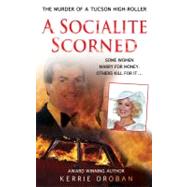
Note: Supplemental materials are not guaranteed with Rental or Used book purchases.
Purchase Benefits
What is included with this book?
KERRIE DROBAN is the co-author of Prodigal Father, Pagan Son: Growing Up Inside the Dangerous World of the Pagans Motorcycle Club and author of Running with the Devil: The True Story of the ATF’s Infiltration of the Hells Angels, winner of the USA Book News National Book Award for Best Memoir/Autobiography and two-time winner for their True Crime award. She is a criminal defense attorney in Arizona.
The victim was Gary Triano, a Tucson real estate developer with influential friends—and enemies. After finishing a round of golf at a country club, he went to the parking lot and found a gift in his car: a crudely made pipe-bomb that blew him to pieces.
A LOVER AND A HITMAN.The bomb-maker was Ron Young, a Colorado “bad guy” wanted on weapons and fraud charges. The prosecution claimed that the woman he was dating at the time promised to pay him $400,000 to murder her ex-husband.
A WANTED WOMAN…Her name was Pamela Phillips, an Aspen socialite, divorcée, and mother of Triano’s two children. She received two million dollars upon his death but evaded suspicion for more than a decade. Finally, halfway across the globe in Austria, authorities caught up with the blonde bombshell—igniting one of the most explosive cases in Arizona history.
Includes 8 pages of dramatic photosThe New copy of this book will include any supplemental materials advertised. Please check the title of the book to determine if it should include any access cards, study guides, lab manuals, CDs, etc.
The Used, Rental and eBook copies of this book are not guaranteed to include any supplemental materials. Typically, only the book itself is included. This is true even if the title states it includes any access cards, study guides, lab manuals, CDs, etc.